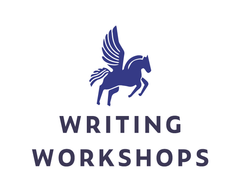by Writing Workshops Org Admin
6 years ago
I am a sucker for a redeemable villain. You’ll find a lot of them in my work, and in the things I choose to watch and read, such as:
The guy with a streak of hero in him who just doesn’t know it yet. The girl who’s a true believer, who’s been fed enough lies to be on the wrong side of things. The guy who starts to care about the people he’s supposed to destroy. The girl who joins forces with the heroes when a bigger, badder villain appears and starts crossing lines she can’t even see with a pair of binoculars.
Give me these in spades.
But there’s a special kind of villain that tugs at the reader’s heart, whether or not the baddie is eventually redeemed. It’s the bad guy who in some way is the hero. They share a common psychological flaw, or painful backstory, or a shared history.
For the hero, looking at the villain is like looking into a fun-house mirror at a distorted version of herself. This is why villains of this type may well have a previous relationship to the hero.
It is not by accident that Shakespeare makes his villain in Much Ado About Nothing the half-brother of the prince everyone adores – you have two characters, one doted on and the other shunned since childhood due to the circumstances of their birth, and one in a position to punish the other over some previous discretion on the villain’s part, which is never fully explained. Don John explains why he’s been trying to ruin the heroes’ lives in this speech in Act III (It helps to know that his grace refers to the Prince, this guy’s half brother, who keeps trying to pull Don John back into society and make peace. The muzzle he’s talking about is having to live by the Prince’s moral/social rules.):
I had rather be a canker in a hedge than a rose in his grace / and it better fits my blood to be disdained of all than to / fashion a carriage to rob love from any. In this, though I / cannot be said to be a flattering honest man, it must not be / denied but I am a plain-dealing villain. I am trusted with a / muzzle and enfranchised with a clog; therefore I have / decreed not to sing in my cage. If I had my mouth, I would / bite; if I had my liberty, I would do my liking. In the / meantime, let me be that I am, and seek not to alter me.
You have to respect the guy for being that honest with himself about what he is, and not hiding his villainous nature from the world, even when you can’t respect the pettiness of his actions in the play.
Also, consider this:
“Two roads diverged in a wood and I - I took the one less traveled by, and that has made all the difference.” – Robert Frost
Even in Frost’s poem, the narrator can’t tell when looking at that diverging path which one is “less traveled.” It’s not until later, having traveled one course, that he can look back and see what life was like for those who took the other path. It is no different for heroes. They didn’t know at the time their backstory was formed that they were taking steps along the path to herodom, walking towards self sacrifice, danger, and transformation into a better version of themselves. Often, there’s only a difference or two in the backstory/present circumstance between the hero and the villain, or a single moment in each of their lives where they made the opposite decision. The villain thus becomes a warning example of what might have been, had the hero chosen the more traveled path in that moment of darkness.
Or, if the biographical difference is something like the hero having a solid group of friends while the villain feels isolated, the hero gets a glimpse of what could be, should the plot push him into the villain’s place.
Sometimes these two characters need each other (what is Batman, psychologically, without the Joker?). Sometimes the plot puts the hero in a position to heal the villain’s backstory wound. Sometimes the hero is tempted by what the villain is offering, or jealous of the villain’s freedom to act, because the villain is doing things the hero wishes she could do, if she could set aside her moral code. There are so many satisfying possibilities.
Instructor Amber Royer's debut Science Fiction novel, a telenovela-inspired space opera, Free Chocolate, is coming June 2018 from Angry Robot Books (named one of Barnes & Noble SFF Blog’s 25 Debuts to Watch for in 2018 ).
